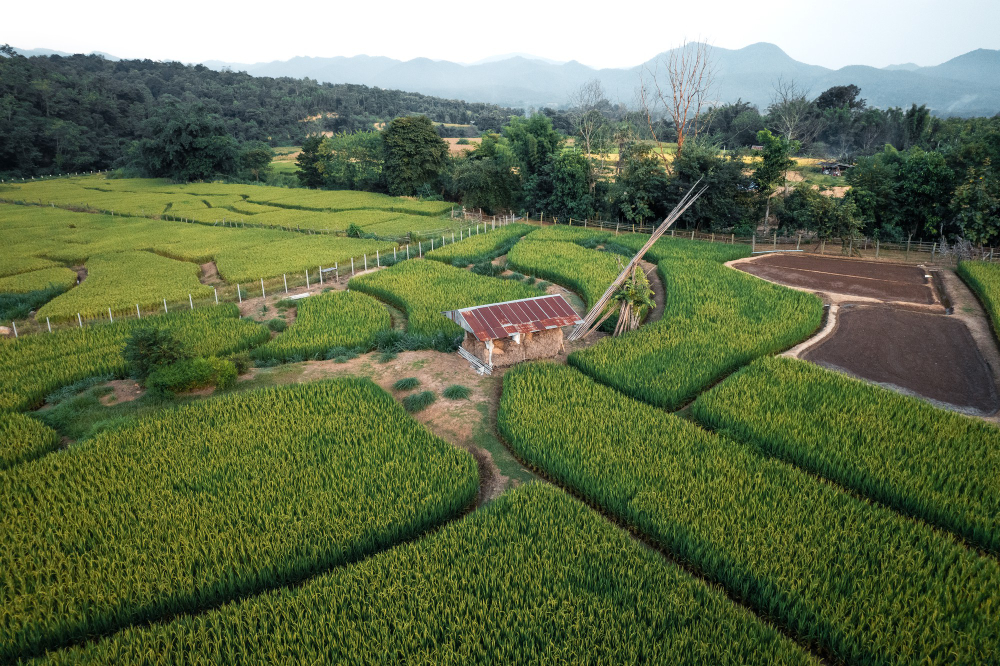Survey reveals Nepal’s unemployment rate climbs to 12.6 percent
The average remittance received per household has surged from Rs15,160 in 1995-96 to Rs145,093 in 2022-23.
Nepal has witnessed an increase in its unemployment rate, as per a recent report.
According to the fourth Nepal Living Standards Survey report released by the National Statistics Office, the unemployment rate has risen to 12.6 percent in 2022-23 from 11.4 percent in 2017-18, marking a 1.2 percent increase over the past five years.
The unemployment rate has escalated from 4.9 percent in 1995-96 to 12.6 percent in 2022-23.
This increase is particularly pronounced among younger workers, with the unemployment rate for those aged 15-24 climbing from 7.3 percent in 1995-96 to 22.7 percent in 2022-23. The report underscores the challenge of providing employment opportunities for youth in Nepal.
The survey highlights a decline in unemployment among individuals aged 15-24 to 22.7 percent in 2022-23 from 23.9 percent in 2017-18.
"The most concerning aspect is the recent 1.2 percent rise in unemployment, which is alarming," said Hem Raj Regmi, Deputy Chief Statistician at the statistics office. "The economy has struggled to generate sufficient jobs for its large and expanding young population."
There has been a shift in the demographic structure towards a younger workforce, with a decrease in the proportion of children (0-14 years) and an increase in adults (15-59 years). This trend is supported by a declining dependency ratio, indicating a growing workforce, while the proportion of elderly individuals (60 years and above) has risen.
Regmi noted that individuals aged 15-24, typically considered the most productive age group, are not viewed as part of the working age in Nepal due to their focus on education and training.
"At this age, our survey indicates that individuals will only work if they secure employment. The responsibility to earn income grows in later years."
The survey data on employment status reveals significant shifts in the labor market between 1995-96 and 2022-23. The percentage of employed individuals has dropped substantially from 67.2 percent in 1995-96 to 32.4 percent in 2022-23, while the percentage of those not participating in the labor force has increased from 29.4 percent to 62.9 percent.
The share of wage employment in agriculture has significantly decreased from 70.7 percent in 1995-96 to 1.9 percent in 2022-23. Conversely, non-agricultural wage employment has risen notably from 9.5 percent in 1995-96 to 56.6 percent in 2022-23.
According to the survey report, 32.4 percent of the population is employed, 62.9 percent is not in the labor force, and 4.7 percent is unemployed.
The labor force participation rate has declined from 38.2 percent five years ago to 37.1 percent in 2022-23.
"Employment conditions in Nepal are dire," remarked economist Pushkar Bajracharya. "The government has failed to generate jobs, largely due to unfavorable investment conditions stemming from political and policy uncertainty. Without investment, job creation stagnates."
Bajracharya predicted a further increase in the unemployment rate due to the lingering effects of the Covid-19 pandemic and the economic slowdown experienced by the country.
"Many industries, service sectors, and companies continue to lay off workers due to economic downturns. There is limited demand for labor as key economic sectors such as construction and manufacturing grapple with recession, with wholesale and retail showing only slight recovery," Bajracharya added.
Experts argue that while the overall unemployment rate remains high, the quality of jobs created in Nepal's economy is insufficient. They advocate for new strategies, partnerships, and objectives to address these challenges.
Each year, approximately a million Nepali youths, including students, seek opportunities abroad, highlighting the scale of migration driven by economic pursuits.
Survey data on remittances and transfers reveals a significant rise in both the prevalence and magnitude of remittances received by Nepali households between 1995-96 and 2022-23.
The proportion of households receiving remittances has surged from 23.4 percent to 76.8 percent during this period, indicating a substantial increase in the number of Nepali families dependent on earnings sent by relatives working overseas.
This rise correlates with the notable growth in average remittances per household, which has increased significantly from Rs15,160 in 1995-96 to Rs145,093 in 2022-23.
Remittances, excluding those from India, dominate this sector, underscoring the critical role of international migration in income generation.
Although remittances from India decreased from 32.9 percent in 1995-96 to 11.1 percent in 2010-11, they have rebounded, reaching 21.3 percent in 2022-23 according to the survey report.
Data on household loans indicates a relatively stable percentage of families borrowing money (61.3 percent in 1995-96 and 63.8 percent in 2022-23), yet the proportion of households with outstanding loans has risen significantly from 58.4 percent to 97.3 percent over the same period.
The source of household loans has shifted, with traditional money lenders' share declining from 39.7 percent to 11.4 percent, while loans from banks have increased from 16.1 percent to 22.4 percent. Loans from relatives remain significant, from 40.8 percent to 42.5 percent.
The survey reveals a decline in borrowing for household consumption, from 49.4 percent to 23.5 percent, possibly indicating improved access to essential goods and services or a shift in borrowing priorities.
Collateral use has also increased, with loans secured by land and houses rising from 16.8 percent to 35.1 percent.
Non-farm activity sectors have seen notable shifts, with trade declining from 52.1 percent to 42.5 percent and manufacturing decreasing from 29.9 percent to 22.6 percent. Service sector enterprises have also reduced from 29.2 percent to 7.2 percent by 2022-23.
The percentage of registered enterprises has significantly increased from 11.7 percent to 52.6 percent, suggesting better compliance with regulations and potentially improved access to resources.
Data from 2022-23 on wage employment provides insights into work types and earnings in Nepal. Wage earners worked an average of 72 days in the past year.
Daily wage work engaged 64.9 percent of people, underscoring the need for more secure and stable job opportunities for the majority of the workforce. Monthly salary jobs accounted for 28.7 percent, while contract-based work made up 6.4 percent.
The survey indicates a significant increase in nominal income levels in Nepal from 1995-96 to 2022-23. Average household income surged from Rs43,732 to Rs551,148 during this period.
Similarly, per capita income saw substantial growth, rising from Rs7,690 to Rs136,707. Income growth varied among income groups, with the per capita income of the poorest 20 percent jumping from Rs2,020 to Rs61,335 and that of the wealthiest 20 percent climbing from Rs19,325 to Rs259,867.
The composition of household income has shifted notably, with farm income dropping from 61 percent to 16.8 percent, reflecting a transition to non-farm and other revenue sources. Remittances constitute a significant portion of this income.
The survey also highlights changes in crop patterns, with paddy-growing land decreasing from 76 percent to 64.3 percent and summer vegetable-growing land increasing from 35.6 percent to 39.3 percent. Meanwhile, cattle-holding land decreased significantly from 73.5 percent to 37.8 percent.
The literacy rate among individuals aged 5 years and above has shown remarkable improvement, rising from 37.8 percent to 77.4 percent. Adult literacy rates (15 years and above) also increased from 35.6 percent to 72.5 percent, indicating significant literacy advancements among the adult population.
This progress is more pronounced among males, with literacy rates rising from 53.5 percent to 82.9 percent, while females' literacy rates increased from 19.4 percent to 64.1 percent.
School attendance among individuals aged 15 years and above has risen significantly, from 33.9 percent in 1995-96 to 70.2 percent in 2022-23, with males' attendance climbing from 50.2 percent to 81.4 percent and females' from 19.1 percent to 61.1 percent.
The survey's health services data paints a varied picture of health status and healthcare access in Nepal between 1995-96 and 2022-23. The population reporting chronic illnesses increased from 6.5 percent to 18.5 percent, indicating a rise in non-communicable diseases.
The percentage reporting acute illnesses also increased from 9 percent to 24.9 percent, suggesting a shift in disease patterns or reporting practices. However, diarrhoea cases decreased from 17 percent to 6.6 percent, potentially due to improved sanitation and hygiene.
Cold and fever remain prevalent concerns, rising from 43.7 percent to 51.5 percent. Consultations with doctors remained stable at around 29 percent, while paramedic consultations significantly declined.
Migration trends within Nepal have undergone notable changes between 2003-04 and 2022-23. Although the overall proportion of the migrant population residing within the country has remained relatively stable—accounting for 36.6 percent in 2003-04 and 38.1 percent in 2022-23—there has been a significant transformation in the gender composition of migrants.
In 2003-04, males constituted a larger segment of migrants at 50.1 percent, whereas by 2022-23, females comprised a greater share at 49.6 percent. This shift suggests a potential alteration in migration patterns, potentially influenced by evolving economic opportunities and societal dynamics.
Furthermore, there has been a decline in the percentage of migrants originating from rural areas in 2022-23, indicating a possible shift in migration trends.
The primary driver for migration remains family reasons, accounting for 75.2 percent of internal migration in 2003-04 and 74.9 percent in 2022-23.
The fourth Nepal Living Standards Survey, conducted in 2022-23, marks the first such survey since the country's transition to a federal system. The survey collected data from a nationally representative sample of 9,600 households, covering a broad spectrum of topics.

